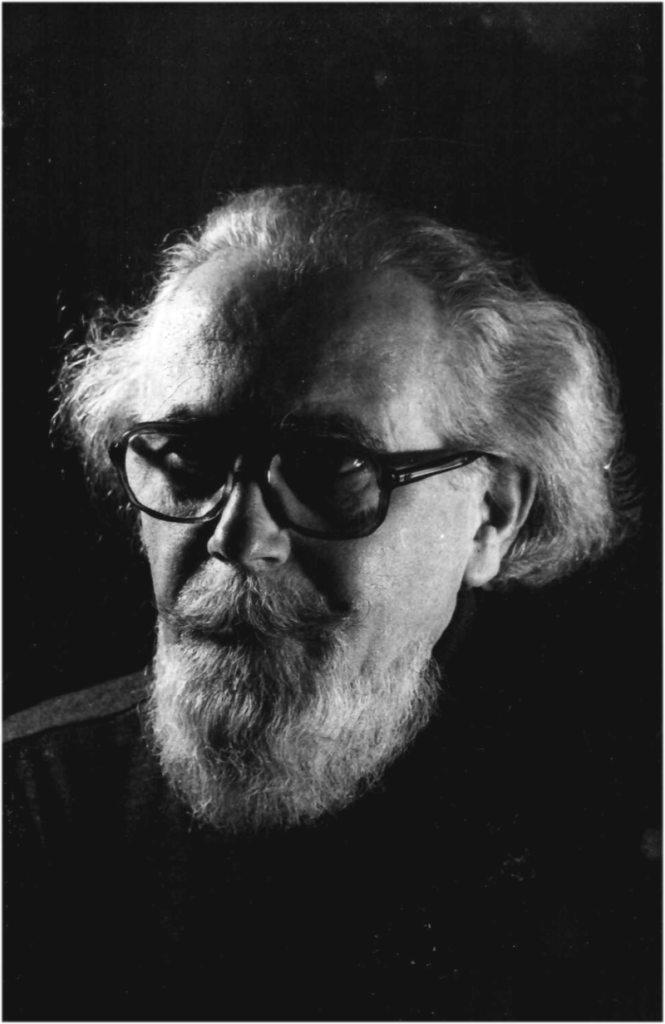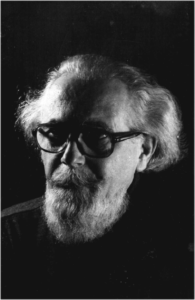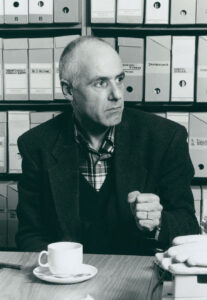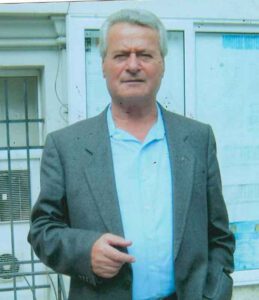Ervin Ditrói Israeli Daily Newspaper in Hungarian, 1990 There are...
Read MoreErvin Ditrói

Israeli Daily Newspaper in Hungarian, 1990
There are many varieties of the colour brown. A brown ochre is a lighter, golden dash
on a brown surface. The structure will be emphasized by black outlines here and there.
When we place a turquoise somewhere, which would not be noticed in another place
but here it is very strong like a lonely brass. The pictures are usually more-figure
compositions but they come into play as a still life in many cases. The figures are not
defined very strictly so the compositions with figures sometimes fade into a still-life.
There are figures reminiscent of people that are totally static and there are stirring
compositions where the line itself is stirring. By combining the figures a swirl comes into
being and at the same time, without our being able to distinguish the figures one by one,
it is obvious and clear that it is a crowd of people. They are sitting, moving people or
people creating ascend. These figures are not defined clearly, their heads and limbs
painted as a hint. The painter lets the imagination flow free without presenting clear
abstraction. In this way this picture has the effect only few pictures have: you can look
at it again and again, it does not become boring after one or two weeks. It may create
associations, and one discovers new forms within the composition as you can watch the
play of a fountain for along time, the base remains the same all the time but details are
different from time to time. The Kovacs pictures have an effect like this.
The first-rate characteristic of the picturesque side is the harmony of colours. In the
same picture the colours play up with each other and together in a certain scale but at
the same time the painter uses a dash of color here and there that has the same effect
as the sound of an unexpectedly appearing instrument in a Haydn symphony. (Or, sorry
forthe comparison, it gives the same feeling as the raisins in the cake). The imagination
of this young artist seethes; he seems to create these compositions with ease. Some
pictures are lively and stirring and some work with moving and live lines in spite of being
static. It would be difficult to give a picture a title or a topic but all of them have their
simile. It is a dream world in a way. By telling it a dream does not seem real but when
one is part of a dream it is as real as the everyday life seems to be. It disappears when
we sleep as the dream disappears when we wake up. A perfect characteristic of these
pictures is being decorative. When we are not looking for content, a concrete subject in
them, when we see them as a collection of dashes of colours, they are very pleasing,
yet attractive. Apart from the still-lives there are no pictures that can be attached to a
certain time, space. In this sense these pictures are abstract. It cannot be said whether
they were painted in Israel, San Francisco or Paris. Although they were all painted in
Israel and are works of a newly immigrated young artist, they are no asphalt
ethnography or exotic folklore. They are abstracted from time and space but not from
today’s time. Concerning the form it is absolutely the result of the age named modern by
us. I say this because it is obvious that every person considered his age modern. Cicero
or Julius Caesar surely did not speak about himself as “we, the ancient people”. Neither
did Maimonides say: “we are here in the middle age, so we should behave as people in
the middle age do.” Arp Kovacs does not say anything but he behaves, he paints like a
modern painter, a contemporary but he will not be untrue to the traditions of the old
masters and the facts he learned about colours, forms and history of arts from his
teachers or other masters.
His paintings: nostalgic dreams about a harmonious world.
More Comments
Jean-Christophe Amman
Jean-Christophe Amman Review of the Exhibition Advanced Retrospective Review of...
Read More



